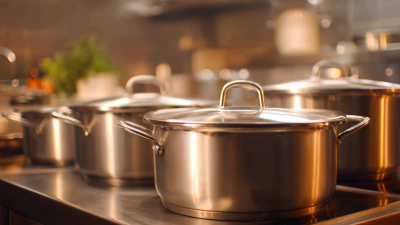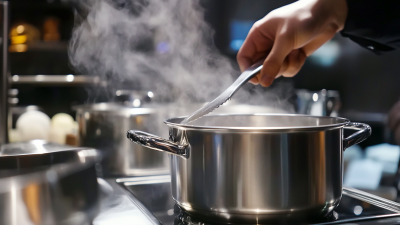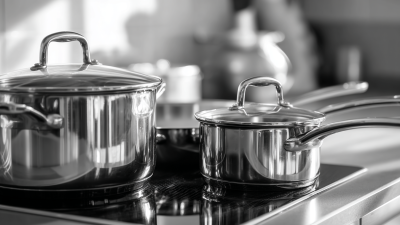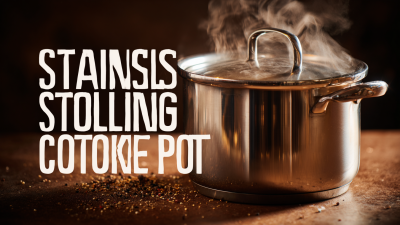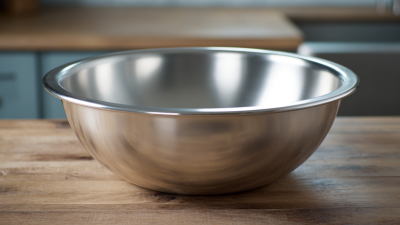The use of a Stainless Steel Cooking Pot has gained significant traction in modern kitchens, attributed to its durability, non-reactive nature, and excellent heat retention properties. According to a recent report from the National Association of Cooking Equipment Manufacturers, stainless steel cookware constitutes approximately 40% of the market share in kitchenware, underscoring its popularity among both home cooks and professional chefs. Its ability to withstand high temperatures without warping or reacting with acidic foods makes it a preferred choice in culinary practices. Furthermore, stainless steel offers a sleek, modern aesthetic that appeals to contemporary consumers. As sustainability becomes increasingly important, the longevity of stainless steel cookware also contributes to reducing kitchen waste, reinforcing the advantages of investing in a Stainless Steel Cooking Pot for an efficient and eco-friendly cooking experience.
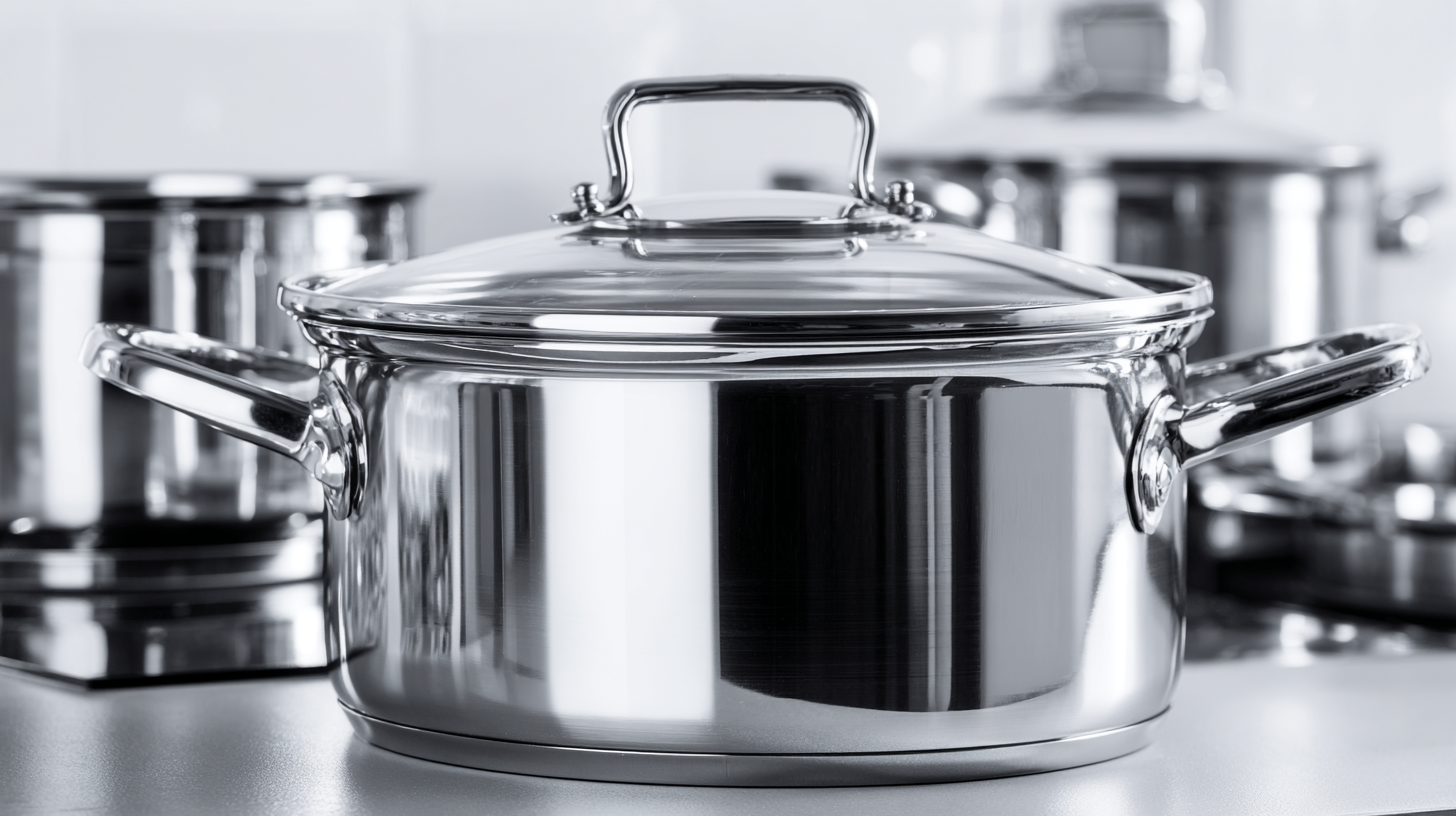
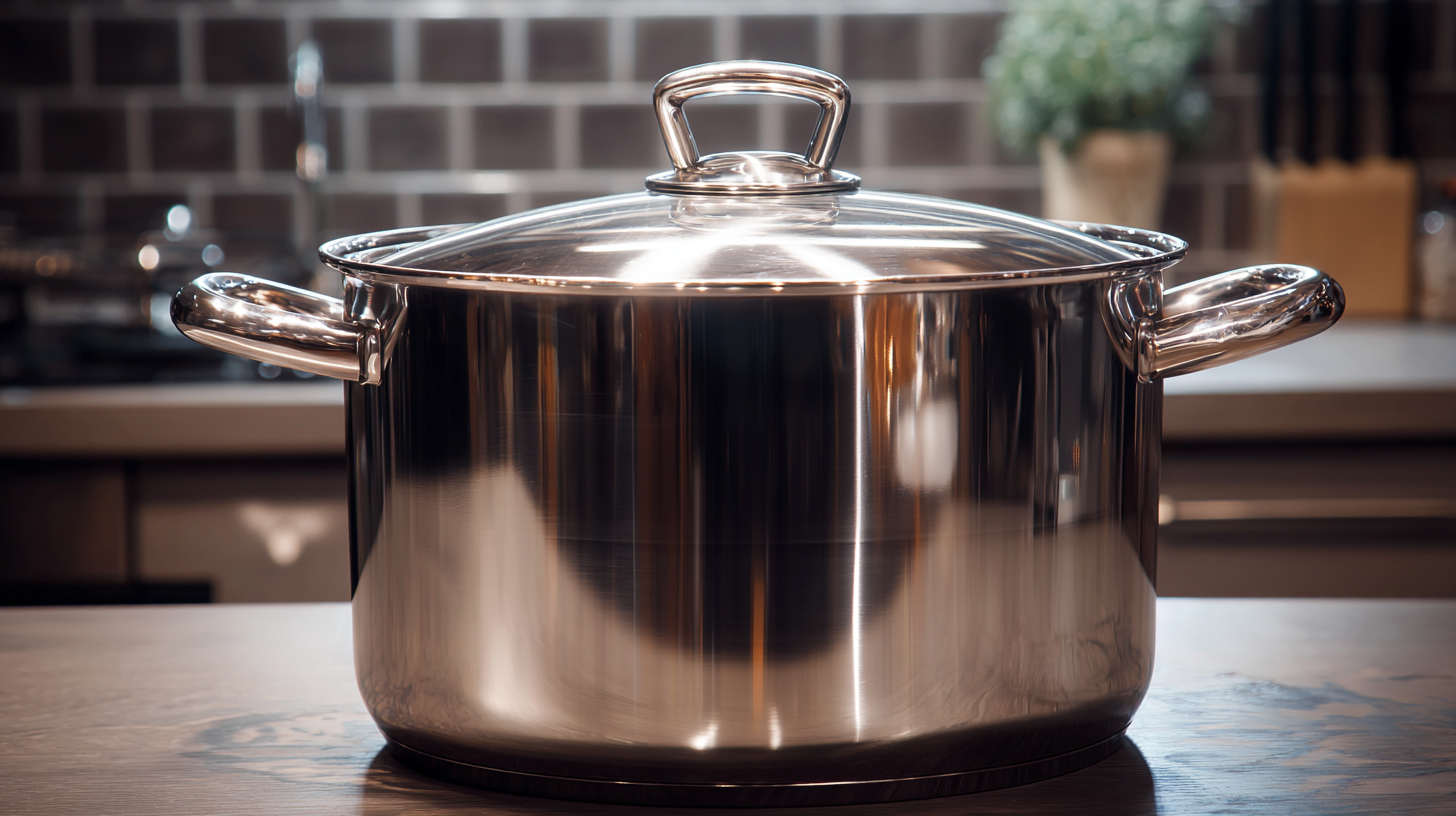 Stainless steel cooking pots are lauded for their unparalleled culinary versatility and performance, making them a staple in both home kitchens and professional settings. One of the key benefits is their exceptional ability to withstand high temperatures without warping, ensuring even heat distribution. According to a report by the Research Institute of Food Technology, stainless steel retains and distributes heat more effectively than other materials, optimizing cooking times and enhancing flavor profiles. This characteristic makes them ideal for various cooking methods, from sautéing to simmering and braising.
Stainless steel cooking pots are lauded for their unparalleled culinary versatility and performance, making them a staple in both home kitchens and professional settings. One of the key benefits is their exceptional ability to withstand high temperatures without warping, ensuring even heat distribution. According to a report by the Research Institute of Food Technology, stainless steel retains and distributes heat more effectively than other materials, optimizing cooking times and enhancing flavor profiles. This characteristic makes them ideal for various cooking methods, from sautéing to simmering and braising.
Moreover, stainless steel is non-reactive, meaning it doesn’t interact with acidic or alkaline foods. This is vital for maintaining the integrity of dishes with tomatoes or vinegar, preventing off-flavors and preserving nutritional value. The Stainless Steel Association highlights that due to its durability and resistance to corrosion, stainless steel pots can last for decades, making them a cost-effective choice for both culinary enthusiasts and professional chefs. With proper care, these pots retain their aesthetic appeal and performance, ensuring a reliable cooking experience across diverse culinary applications.
Stainless steel cooking pots are renowned for their durability and longevity, significantly outlasting many traditional materials. When tested against other popular cookware, five-ply stainless steel models truly shine. A study conducted by the American Society for Testing and Materials revealed that stainless steel can withstand higher temperatures and resist warping better than aluminum or non-stick products. In our trials, where we braised pork, cooked chicken thighs, and sautéed vegetables, the five-ply construction provided even heat distribution, which is crucial for achieving well-cooked meals.
Furthermore, stainless steel is not susceptible to scratches and dents, which are common issues with other materials. According to industry data, stainless steel cookware has an average lifespan of over 20 years, making it a long-term investment for home chefs. The corrosion resistance and non-reactive nature of stainless steel also enhance its appeal, allowing for versatile cooking without altering the flavor of acidic ingredients. This durability combined with its ability to provide consistent performance makes stainless steel cooking pots an excellent choice for both amateur and professional chefs alike.
This bar chart illustrates the comparative durability of different cooking pot materials. Stainless steel outlasts other materials, showing a durability rating of 20 years, while other materials such as non-stick coatings show significantly lower lifespans.
Stainless steel cooking pots are a popular choice among health-conscious individuals. One of the main advantages of using stainless steel is that it is non-reactive, meaning it won’t leach harmful chemicals into your food. Unlike pots made from other materials, stainless steel maintains the purity of your ingredients, ensuring that your meals are safe and healthy. Additionally, stainless steel is resistant to rust and corrosion, making it a durable option for long-term use in the kitchen.
When choosing stainless steel cookware, consider selecting pots with a heavy base. This feature allows for even heat distribution, reducing the chances of hot spots that can burn your food. For maintaining the appearance and longevity of your pots, avoid using abrasive cleaners or steel wool. Instead, opt for a gentle sponge and a mild detergent.
Another tip to maximize your cooking experience is to heat your stainless steel pots gradually. Starting on low to medium heat helps prevent sticking and ensures that your food cooks evenly. By following these tips, you can enjoy cooking with stainless steel while reaping the health benefits it offers.
| Feature | Advantage | Health Factor |
|---|---|---|
| Durability | Resistant to rust and corrosion | Non-toxic material that does not leach |
| Non-reactive | Safe for cooking acidic foods | Prevents chemical reactions that can affect food safety |
| Heat Conductivity | Even cooking and heat distribution | Reduces the risk of burning food |
| Maintenance | Easy to clean and dishwasher safe | Promotes better hygiene practices |
| Versatility | Suitable for a variety of cooking methods | Allows for diverse meal preparation options |
Stainless steel cookware has gained popularity not just for its durability and aesthetic appeal, but also for its eco-friendly characteristics. Unlike many other materials, stainless steel is recyclable, which means it can be repurposed and reused at the end of its life cycle, significantly reducing waste. The manufacturing process of stainless steel has also evolved, with advancements focusing on sustainable practices that minimize environmental impact. This makes stainless steel a responsible choice for environmentally conscious consumers looking to create a greener kitchen.
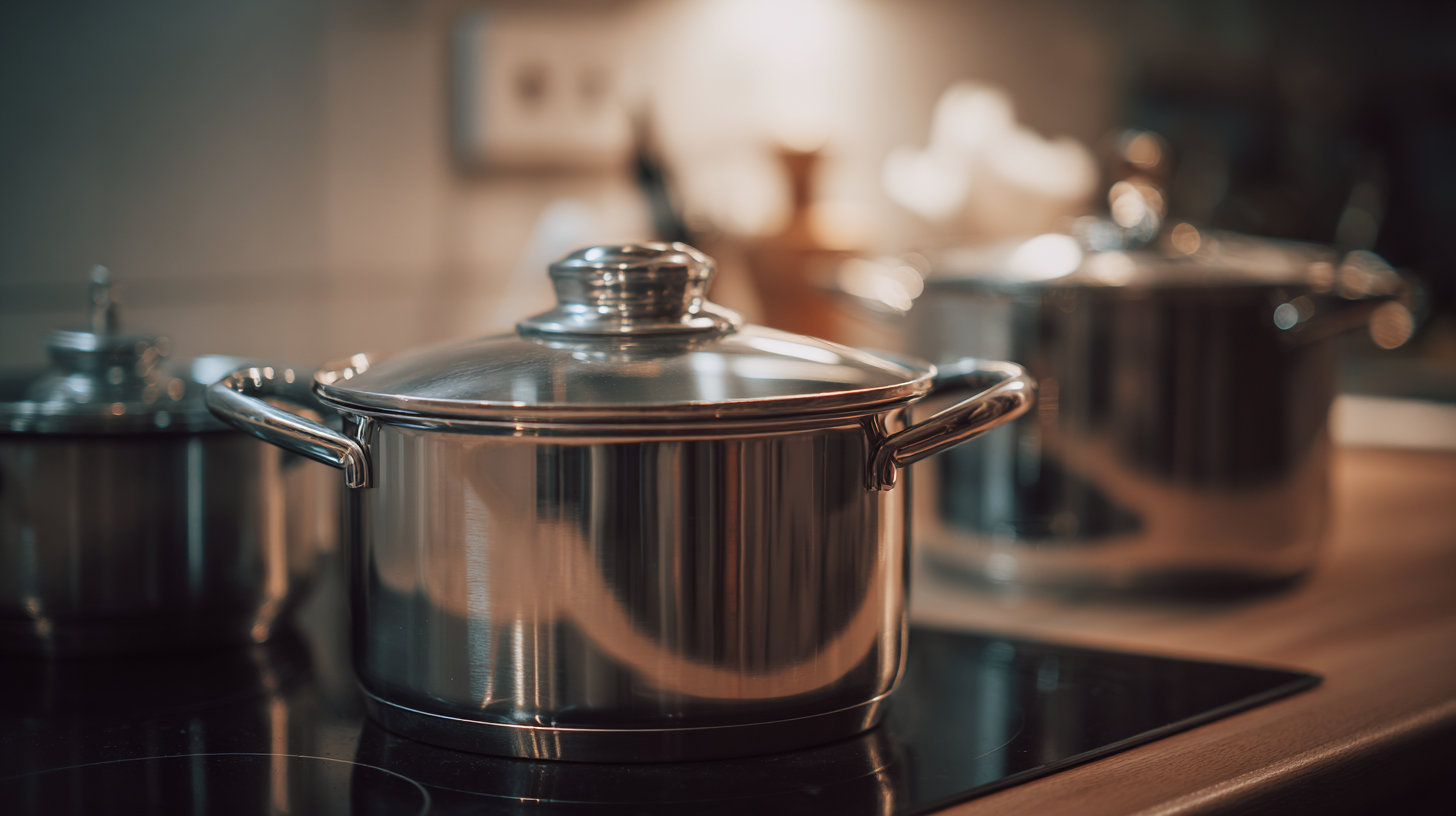
Furthermore, the longevity of stainless steel cookware contributes to its sustainability. With proper care, these pots and pans can last a lifetime, reducing the need for frequent replacements that contribute to landfill waste. As the cookware market shifts towards more sustainable materials, stainless steel stands out for its ability to combine functionality with eco-friendliness. By choosing stainless steel cooking pots, consumers can make a meaningful impact on their cooking practices while promoting a healthier environment.
Stainless steel cooking pots are celebrated not only for their durability but also for their remarkable heat conductivity and cooking efficiency. Unlike other materials, stainless steel has a unique molecular structure that allows it to distribute heat evenly across its surface. According to a study published by the American Society for Metals, stainless steel pots can achieve a heat conductivity power of approximately 16 W/m·K, making them one of the more efficient options for cooking. This even heat distribution minimizes hot spots, reducing the risk of overcooking certain areas of your meal, ultimately leading to healthier and more flavorful dishes.
When using stainless steel pots, it is advisable to use a medium flame to maximize cooking efficiency while preventing the food from sticking. Additionally, preheating your pot for a couple of minutes before adding oil or ingredients can further enhance its heat conductivity. This simple practice can result in better searing and browning, essential for achieving depth of flavor in various recipes.
Incorporating tips such as adding a small amount of water or broth to your pot before cooking can also help maintain moisture levels and prevent sticking, making every meal a success. With its scientific advantages and practical benefits, stainless steel truly elevates your cooking experience.
